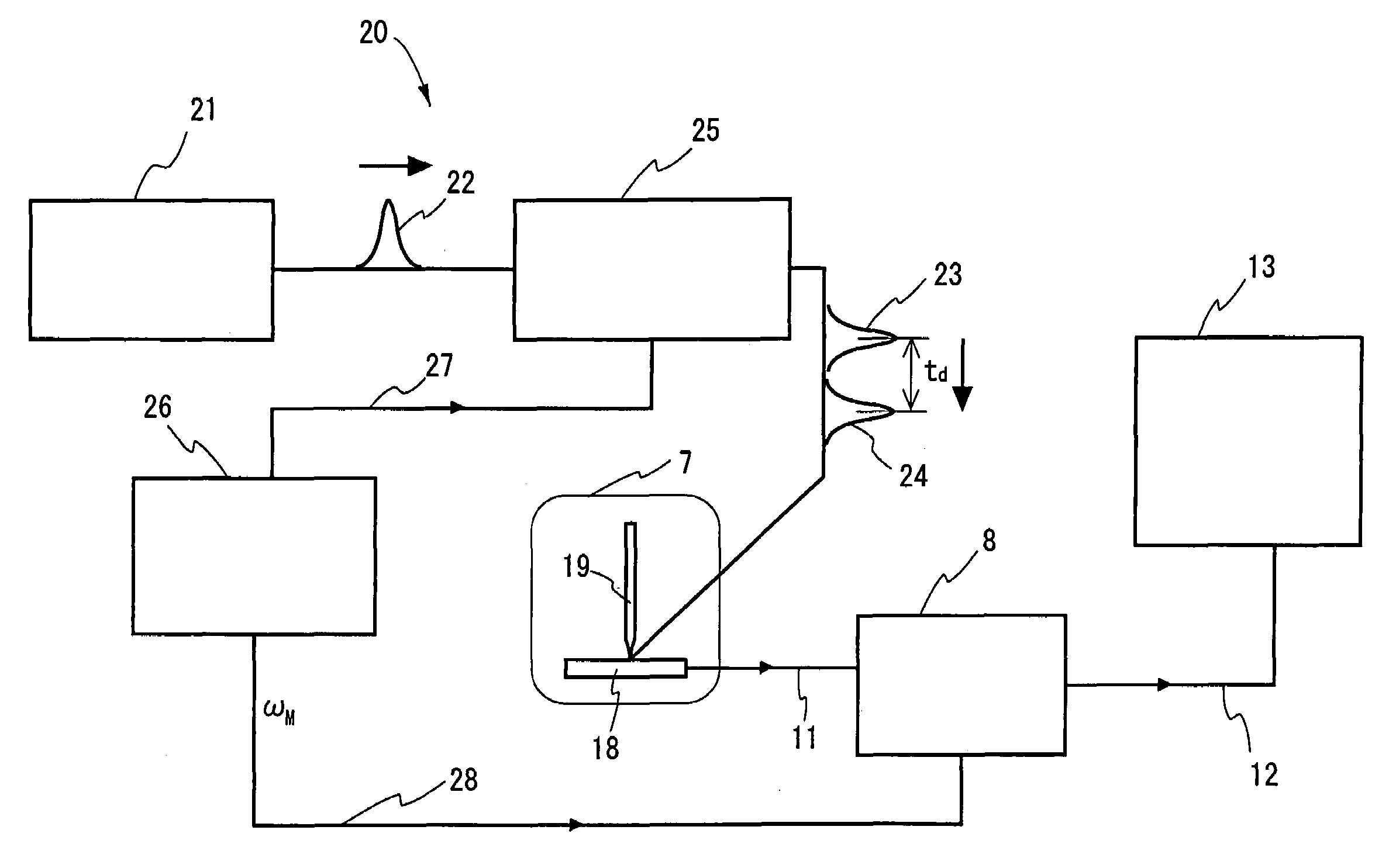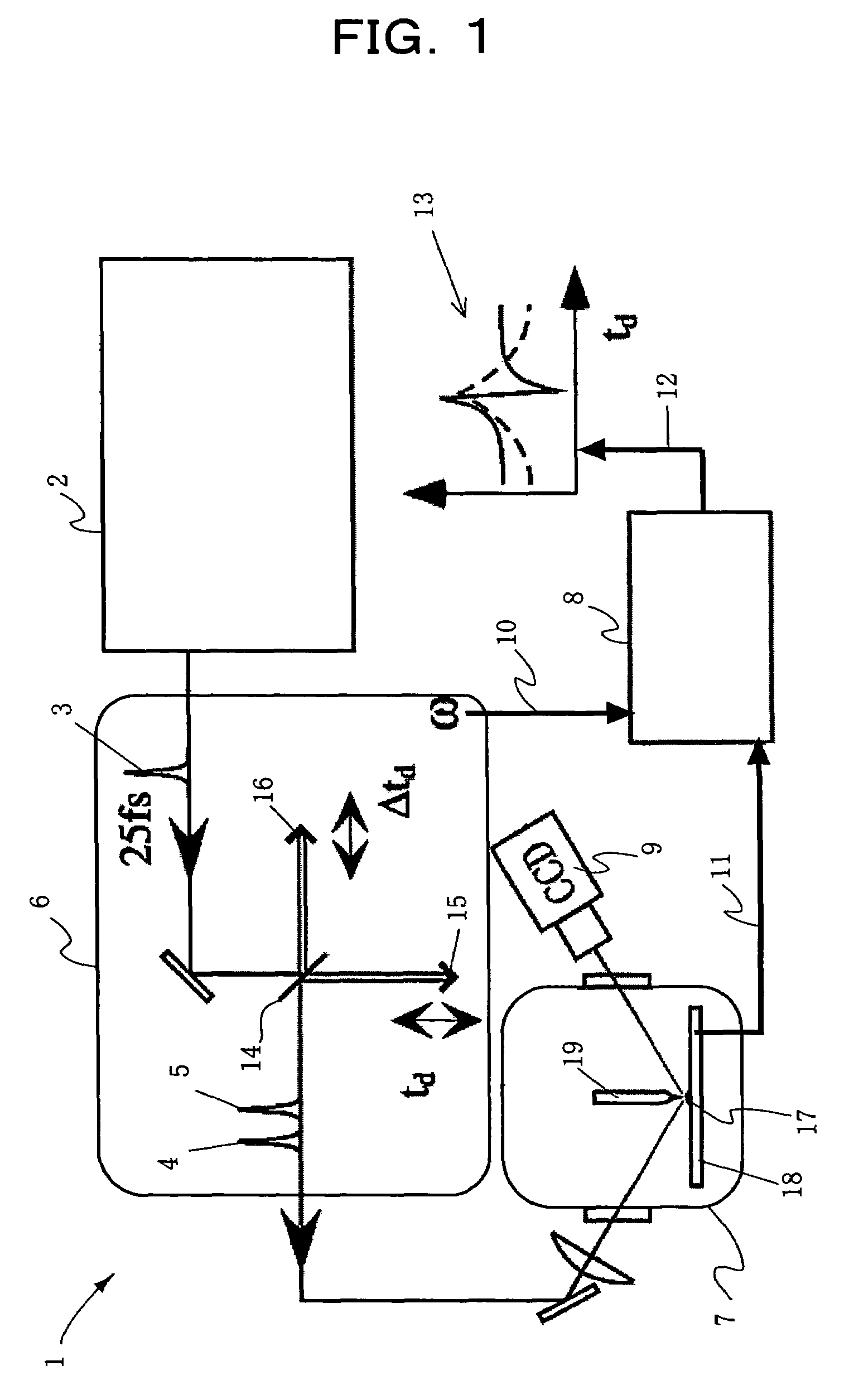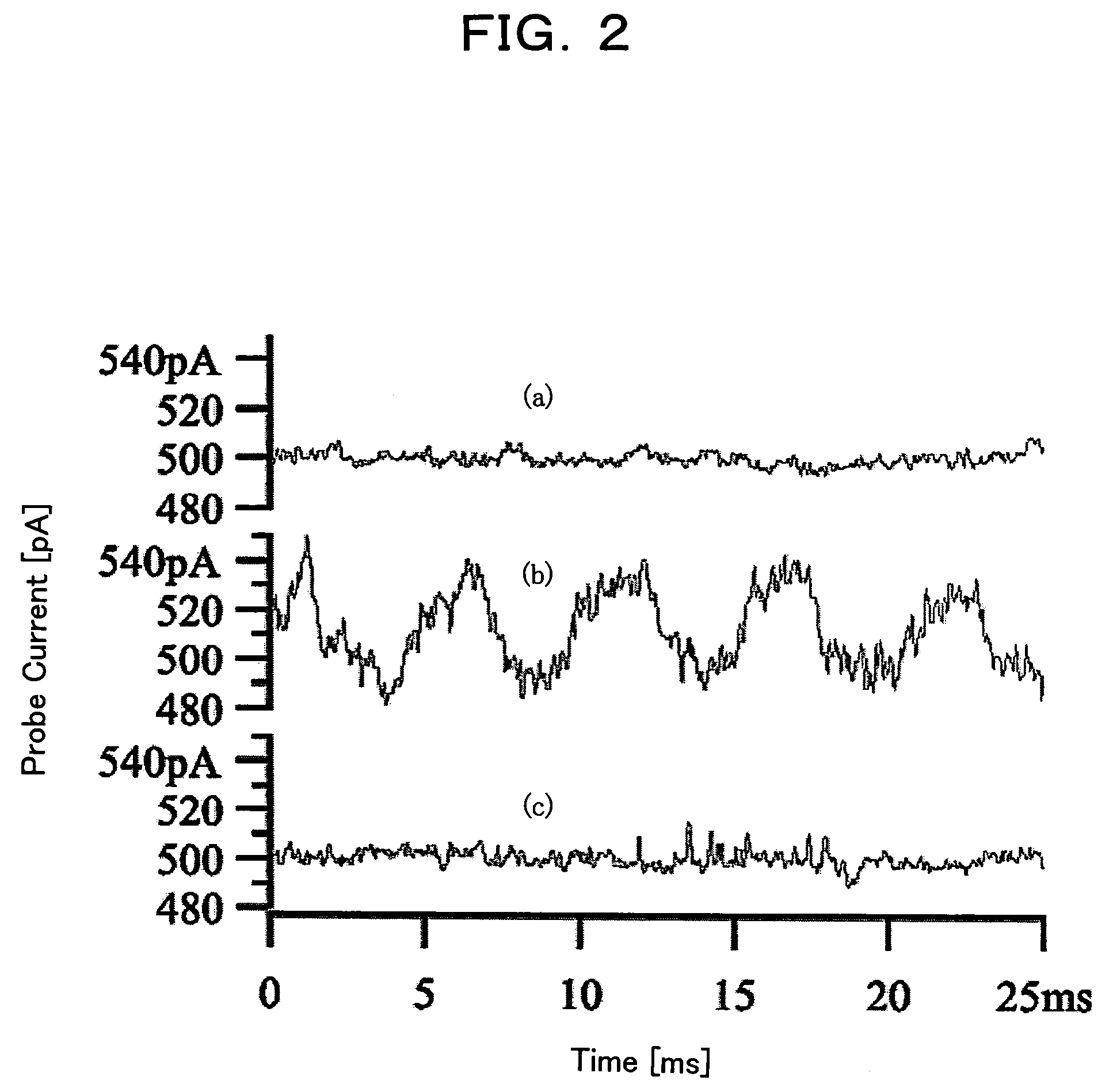Delay time modulation femtosecond time-resolved scanning probe microscope apparatus
a scanning probe microscope and time-resolved technology, applied in the direction of fluorescence/phosphorescence, optical radiation measurement, instruments, etc., can solve the problems of generators with long-period fluctuation, insufficient measurement precision, and conventional apparatuses mentioned above, and achieve high sensitivity and high precision.
- Summary
- Abstract
- Description
- Claims
- Application Information
AI Technical Summary
Benefits of technology
Problems solved by technology
Method used
Image
Examples
Embodiment Construction
[0042]Hereinafter, the present invention will be described in detail with reference to certain suitable forms of implementation thereof illustrated in the drawing figures.
[0043]Mention is first made of a delay time modulated and femtosecond time-resolved scanning probe microscope apparatus constituting a first form of implementation of the present invention.
[0044]FIG. 1 is a diagram illustrating the construction of a delay time modulated and femtosecond time-resolved scanning probe microscope apparatus constituting a first form of implementation of the present invention. In the Figure, the delay time modulated and femtosecond time-resolved scanning probe microscope apparatus of the present invention designated by reference numeral 1 comprises an ultrashort laser pulse generator 2 for producing a series of ultrashort laser pulses 3; a delay time modulating circuit 6 which splits an ultrashort laser pulse 3 produced by the ultrashort laser pulse generator 2 into two ultrashort laser p...
PUM
| Property | Measurement | Unit |
|---|---|---|
| delay time | aaaaa | aaaaa |
| repetition frequency | aaaaa | aaaaa |
| wavelength | aaaaa | aaaaa |
Abstract
Description
Claims
Application Information
 Login to View More
Login to View More - R&D
- Intellectual Property
- Life Sciences
- Materials
- Tech Scout
- Unparalleled Data Quality
- Higher Quality Content
- 60% Fewer Hallucinations
Browse by: Latest US Patents, China's latest patents, Technical Efficacy Thesaurus, Application Domain, Technology Topic, Popular Technical Reports.
© 2025 PatSnap. All rights reserved.Legal|Privacy policy|Modern Slavery Act Transparency Statement|Sitemap|About US| Contact US: help@patsnap.com



